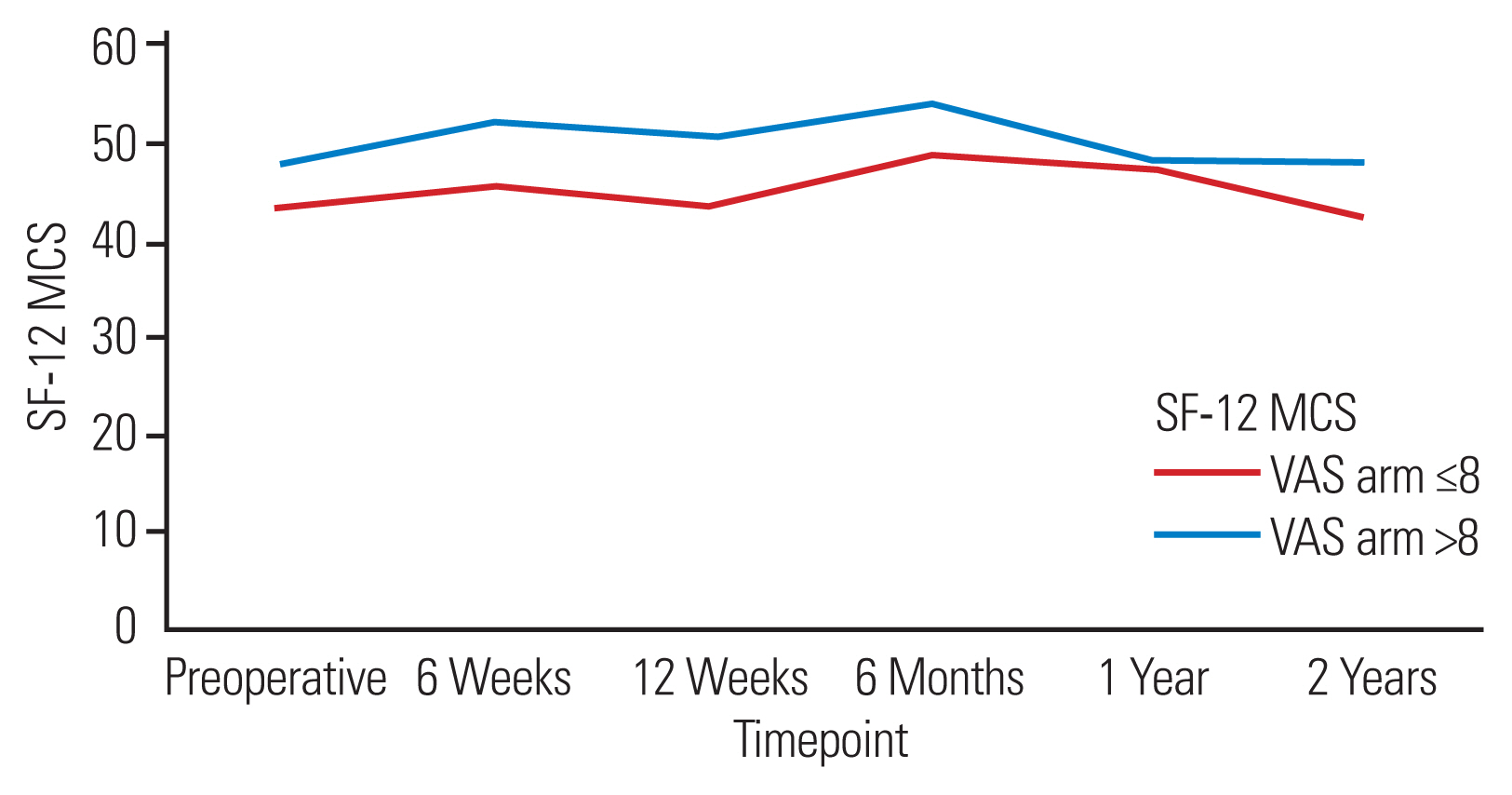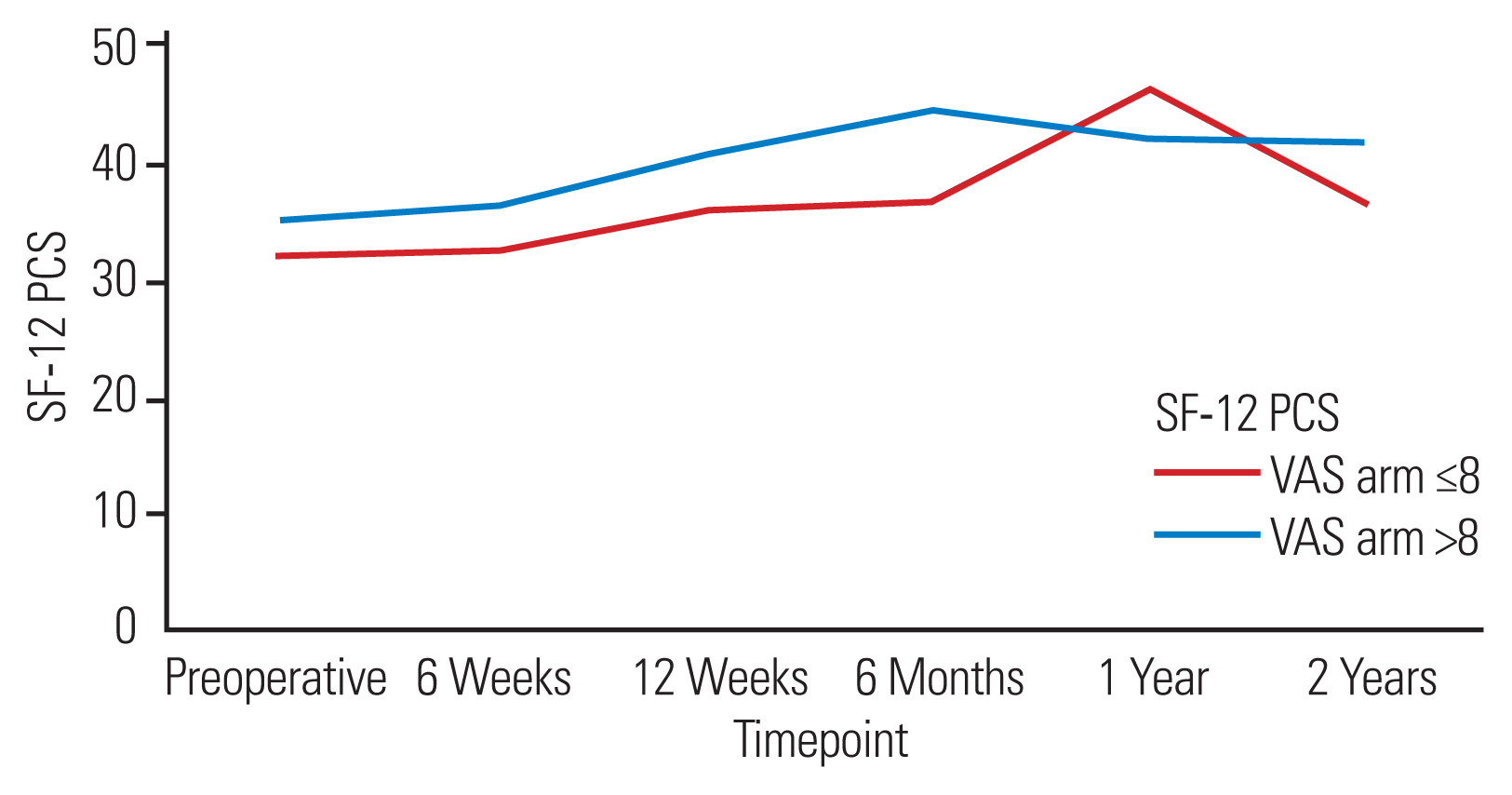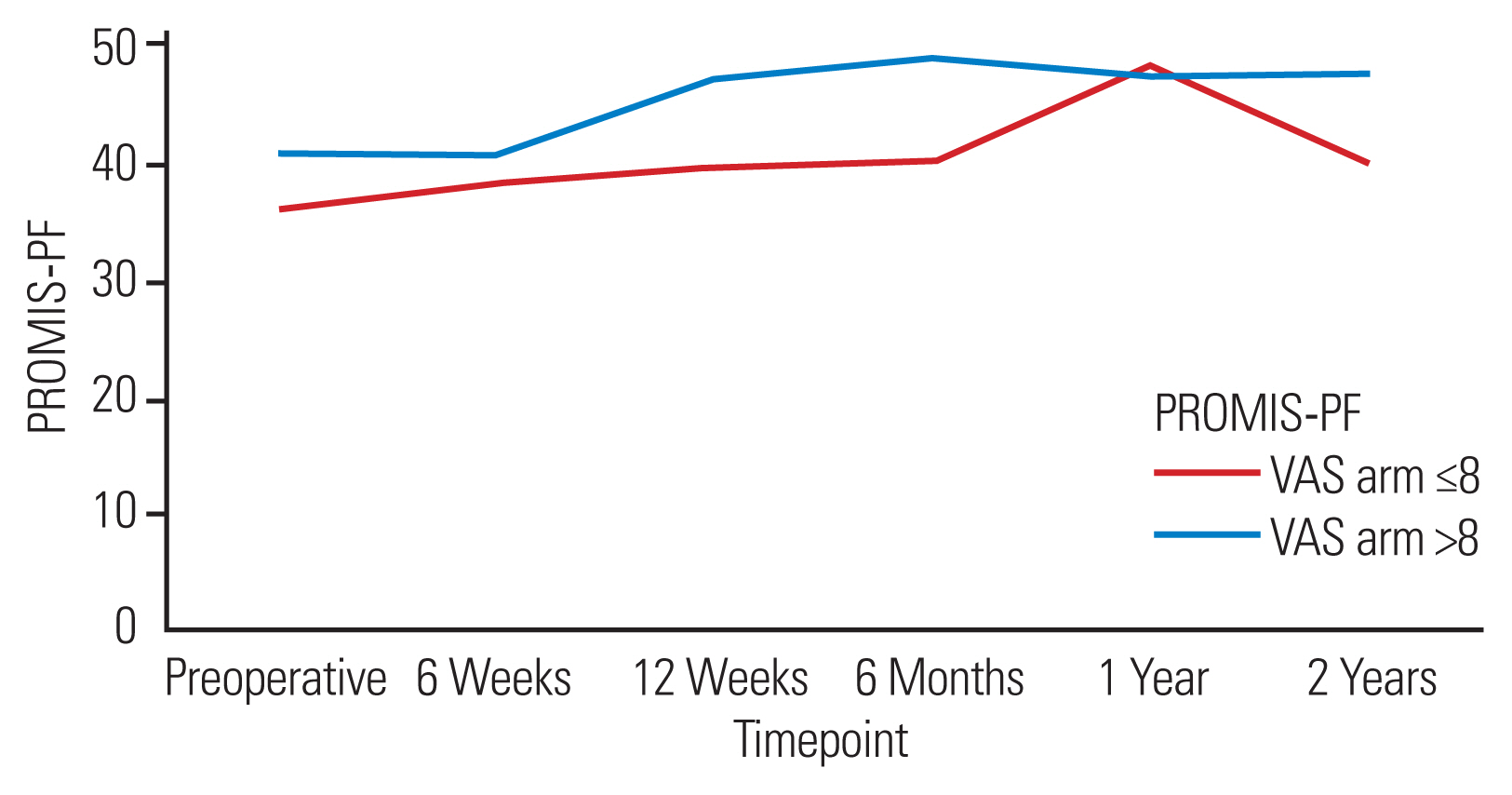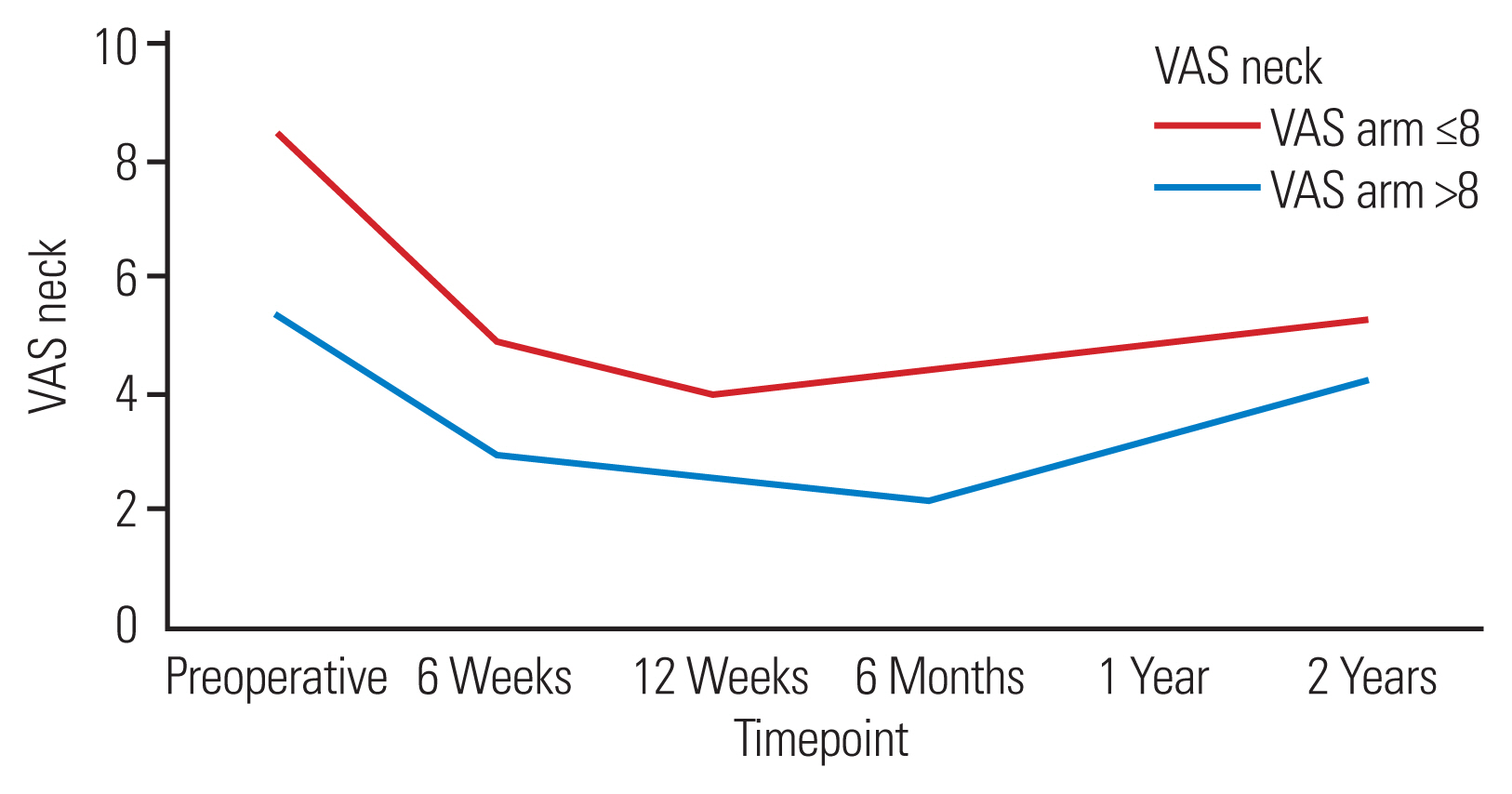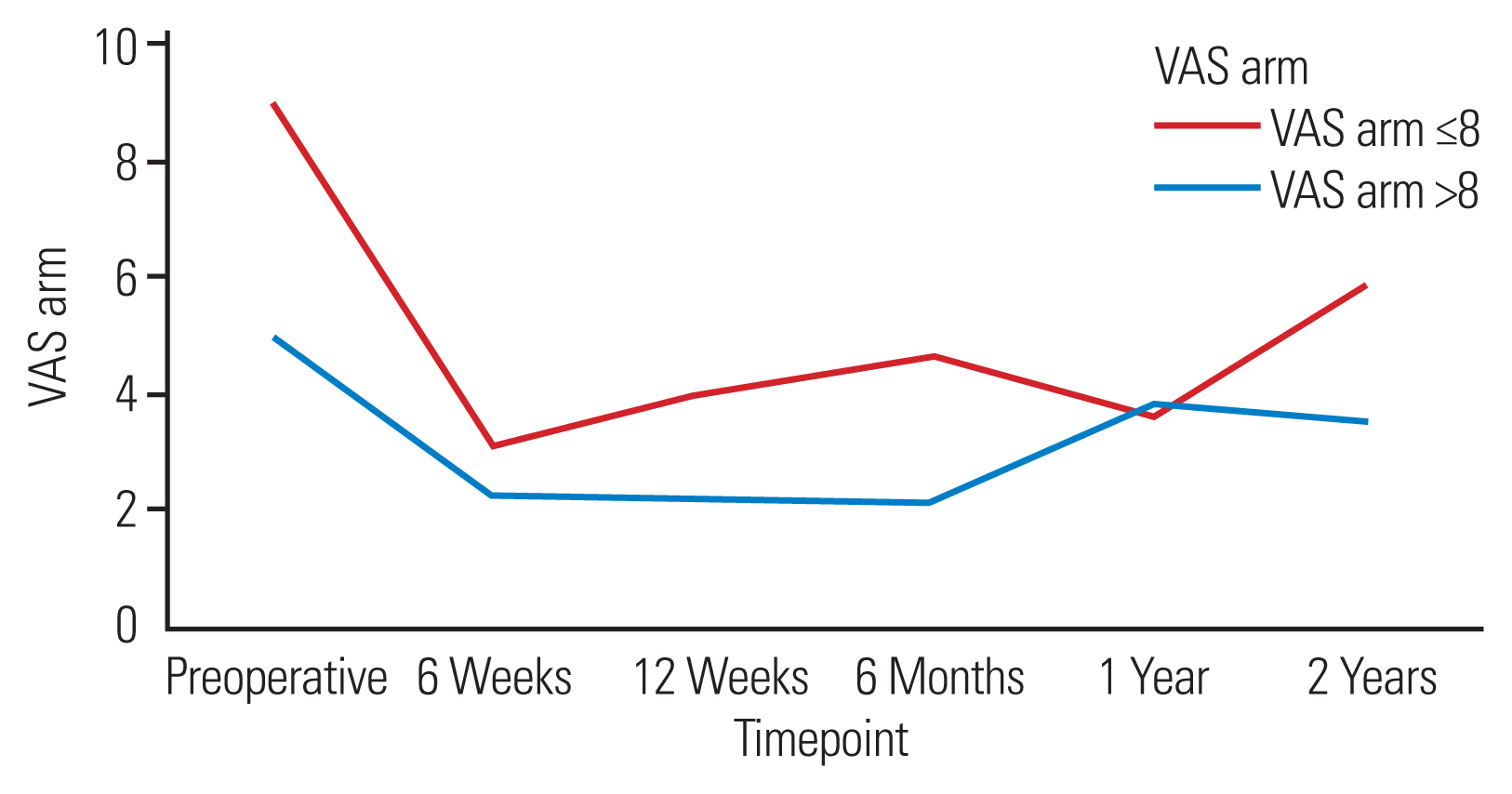2. Massel DH, Mayo BC, Bohl DD, et al. Improvements in neck and arm pain following an anterior cervical discectomy and fusion. Spine (Phila Pa 1976) 2017 42:E825–32.


4. Devin CJ, Asher AL, Alvi MA, et al. Impact of predominant symptom location among patients undergoing cervical spine surgery on 12-month outcomes: an analysis from the Quality Outcomes Database. J Neurosurg Spine 2021 35:399–409.


5. Parker SL, Godil SS, Shau DN, Mendenhall SK, McGirt MJ. Assessment of the minimum clinically important difference in pain, disability, and quality of life after anterior cervical discectomy and fusion: clinical article. J Neurosurg Spine 2013 18:154–60.

6. Steinhaus ME, Iyer S, Lovecchio F, et al. Minimal clinically important difference and substantial clinical benefit using PROMIS CAT in cervical spine surgery. Clin Spine Surg 2019 32:392–7.


8. Chung AS, Copay AG, Olmscheid N, Campbell D, Walker JB, Chutkan N. Minimum clinically important difference: current trends in the spine literature. Spine (Phila Pa 1976) 2017 42:1096–105.

10. Stull JD, Goyal DK, Mangan JJ, et al. The outcomes of patients with neck pain following ACDF: a comparison of patients with radiculopathy, myelopathy, or mixed symptomatology. Spine (Phila Pa 1976) 2020 45:1485–90.

12. Khechen B, Patel DV, Haws BE, et al. Evaluating the concurrent validity of PROMIS physical function in anterior cervical discectomy and fusion. Clin Spine Surg 2019 32:449–53.


13. Hermansen A, Hedlund R, Vavruch L, Peolsson A. Positive predictive factors and subgroup analysis of clinically relevant improvement after anterior cervical decompression and fusion for cervical disc disease: a 10- to 13-year follow-up of a prospective randomized study: clinical article. J Neurosurg Spine 2013 19:403–11.

14. MacDermid JC, Walton DM, Avery S, et al. Measurement properties of the neck disability index: a systematic review. J Orthop Sports Phys Ther 2009 39:400–17.


15. Vernon H. The Neck Disability Index: state-of-the-art, 1991–2008. J Manipulative Physiol Ther 2008 31:491–502.


17. Parrish JM, Jenkins NW, Brundage TS, Hrynewycz NM, Yoo JS, Singh K. PROMIS physical function predicts postoperative pain and disability following anterior cervical discectomy and fusion. Clin Spine Surg 2020 33:382–7.


18. Hermansen AM, Cleland JA, Kammerlind AS, Peolsson AL. Evaluation of physical function in individuals 11 to 14 years after anterior cervical decompression and fusion surgery: a comparison between patients and healthy reference samples and between 2 surgical techniques. J Manipulative Physiol Ther 2014 37:87–96.


19. Vilagut G, Forero CG, Pinto-Meza A, et al. The mental component of the short-form 12 health survey (SF-12) as a measure of depressive disorders in the general population: results with three alternative scoring methods. Value Health 2013 16:564–73.


20. Goh GS, Liow MH, Yeo W, et al. Poor baseline mental health does not influence improvement in patient-reported outcomes, satisfaction, and return to work two years after single-level anterior cervical discectomy and fusion. Spine (Phila Pa 1976) 2019 44:839–47.


21. Mangan JJ 3rd, Tadley M, Divi SN, et al. The impact of multiple comorbid mental health disorders on health-related quality of life following ACDF. Clin Spine Surg 2020 33:E472–7.


22. Jenkins NW, Parrish JM, Yoo JS, et al. Are preoperative PHQ-9 scores predictive of postoperative outcomes following anterior cervical discectomy and fusion? Clin Spine Surg 2020 33:E486–92.


23. Paredes AZ, Hyer JM, Diaz A, Tsilimigras DI, Pawlik TM. The impact of mental illness on postoperative outcomes among Medicare beneficiaries: a missed opportunity to help surgical patients? Ann Surg 2020 272:419–25.

25. Geoffrion R, Koenig NA, Zheng M, et al. Preoperative depression and anxiety impact on inpatient surgery outcomes: a prospective cohort study. Ann Surg Open 2021 2:e049.




